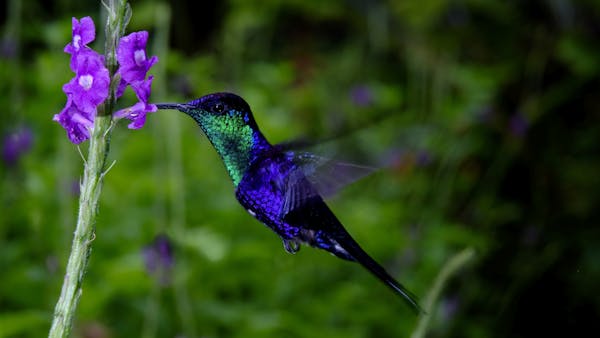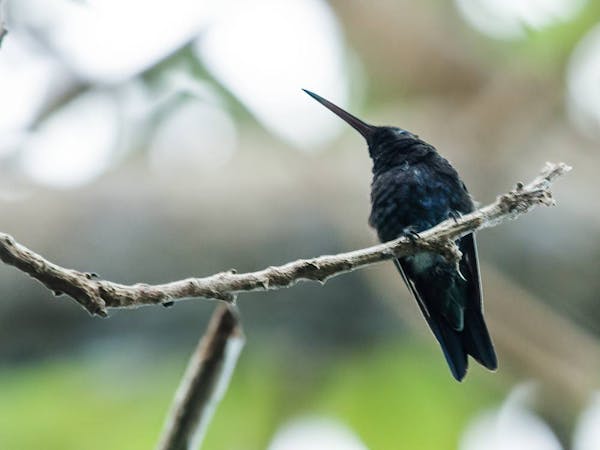The majestic Patagonian giant: A closer look at the world's largest hummingbird
- Nature Conservation
- Iconic Species
- Birds
- Wildlife
- Land Conservation
- Southern America Realm
- Andes Mountains & Pacific Coast
One Earth’s “Species of the Week” series highlights an iconic species that represents the unique biogeography of each of the 185 bioregions of the Earth.
The giant hummingbird (Patagona gigas) stands alone as the sole species within its genus. Despite its size, it exhibits a hovering flight as graceful as its smaller counterparts, capable of adept flying at both sea level and high altitudes. This remarkable ability stems from its efficient oxygen supply system to the muscles and the mechanical design of its wings.
Over millennia, the giant hummingbird has diverged into two subspecies: the Patagonia gigas gigas, which occupies regions from the coast to the foothills of the Andes at 2,500 meters (8,202 ft) above sea level, and the Patagonia gigas peruviana, thriving at even higher elevations.
The species owes its success to several factors: the plentiful nectar-producing flowers, high-quality calcium and trace minerals in the soil, minimal predator threats, and highly territorial behavior.
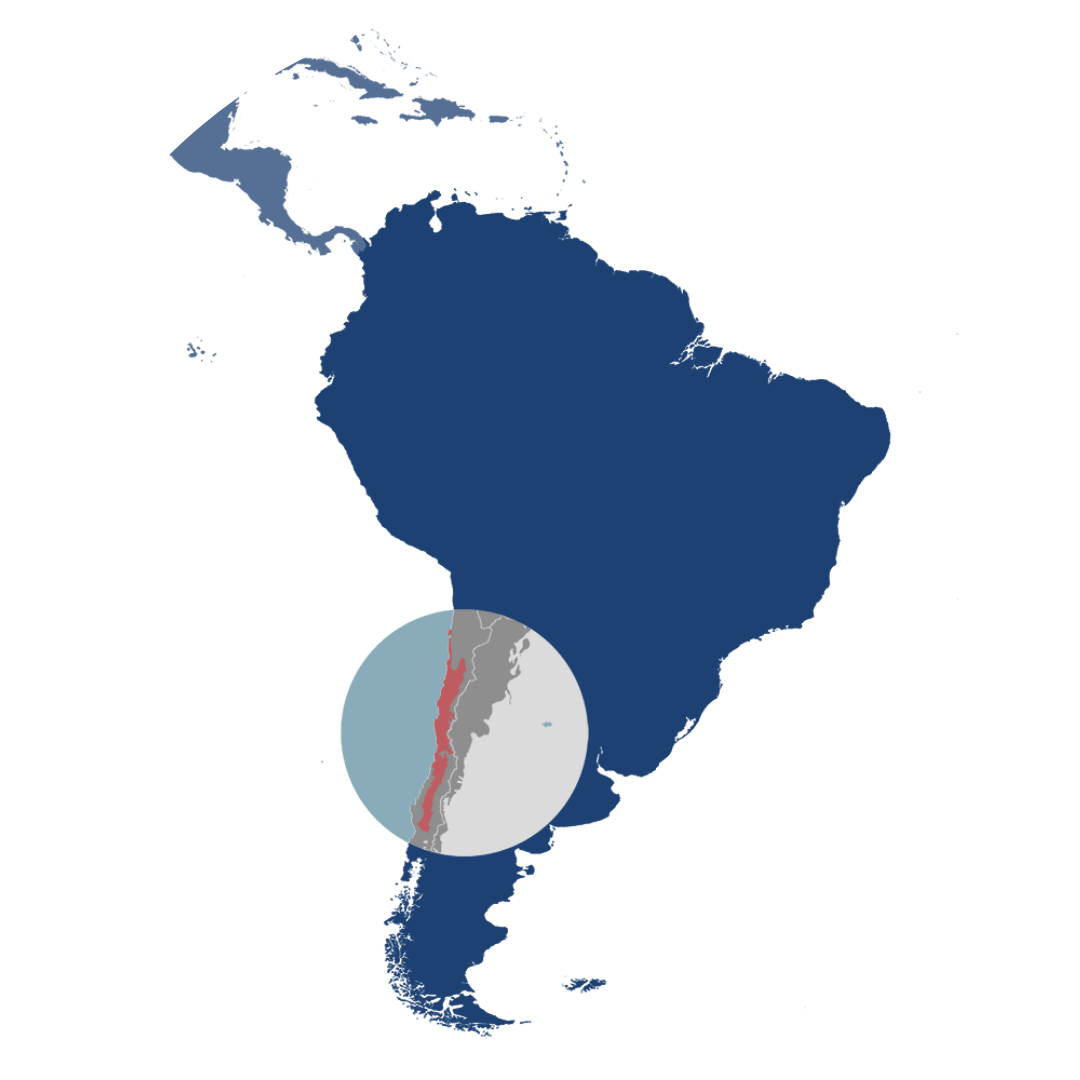
The giant hummingbird (Patagona gigas) is the iconic species of the Chilean Matorral Shrublands & Savanna Bioregion (NT6) located in the Andes & Pacific Coast Subrealm.
Habitat and symbiotic relationships with plants
Commonly known as picaflor in Spanish, the giant hummingbird spans a diverse range of high-altitude deserts and shrublands across Ecuador, Peru, Bolivia, Argentina, and Chile. In Chile, their presence extends along the Andes from Arica to Antofagasta, occasionally reaching as far south as the island of Chiloé.
Picaflor thrives in bushy areas with running streams in mountain valleys, creating desert oases adorned with columnar cacti and bromeliads. Their interaction with cactus flowers is so intimate and careful that it seems as if the picaflor and the cactus have entered a mutual agreement of protection. The bird defends the flowers from small birds, while the cactus's long prickles safeguard the nest and chicks from snakes.
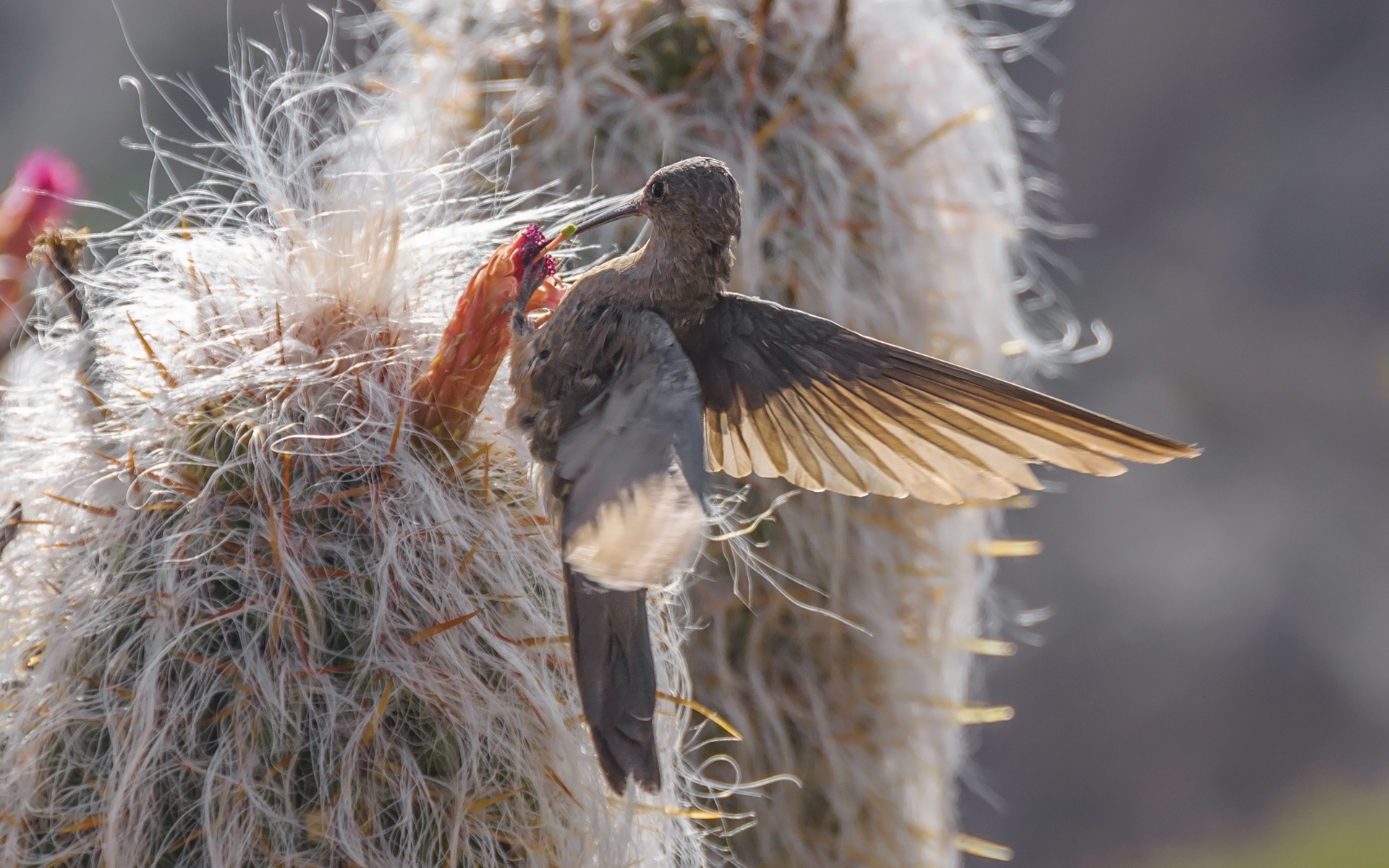
Giant hummingbirds are crucial pollinators, helping vegetation thrive in their ecosystem. Image credit: Mario Giorgetta.
Their Mapuche name, puya, reflects the symbiotic bird-plant relationship, mirroring the bird's fine, long beak with the spines of cacti like the cardón peludo (Oreocereus celcianus) and Austrocylindropuntia subulata. The giant hummingbird stands on these prickles to access nectar and insects within the flowers.
The bird also favors the inflorescences of Puya chilensis and the flowers of tobacco plants (Nicotiana glauca and Lobelia excelsa) and the hedgehog cactus (Echinopsis sp), approaching these plants mid-flight for nourishment.
%20DSC_1193Mario%20Giorgetta.jpg)
Known as the picaflor in Spanish, the giant hummingbird spans a diverse range of high-altitude deserts and shrublands. Image credit: Mario Giorgetta.
Physical traits and lifestyle
The giant hummingbird, measuring 21 to 22 centimeters (8.3-8.6 in.) in length—comparable to the size of a standard ruler—boasts a captivating appearance with its greenish-gray plumage and a subtle metallic sheen. The underparts exhibit a reddish-brown color with greenish edges. Despite their size, there is little difference between males and females, though males are marginally larger.
Nests are constructed atop cacti, providing a fortress against predators. Vigilant over their home, giant hummingbirds remain attentive even outside the flowering season. Females construct compact nests on cactus tops, ensuring safety as they incubate one or two eggs. Prior to laying eggs, they consume mineral-rich soils from the Andes and insects caught in flowers, enriching the diet of their offspring with essential proteins.
Ecological significance
Predominantly found in northern Chile, the giant hummingbird plays a pivotal role in the health of the Andean ecosystem. As bioindicators, they offer insights into the vibrancy of their habitats. Their pollination activities are crucial for the reproductive success of various plant species, fostering biodiversity conservation.

Aerial view of the hummingbird geoglyph Nazca Lines in Peru. Image credit: © King Ho Yim, Dreamstime.
A symbol of complexity in Indigenous cultures
In Peru and Chile, the giant hummingbird is imbued with profound symbolism. Its depiction in the ancient Nazca Lines — a series of giant ancient geoglyphs in the Nazca Desert along the southern coast of Peru— highlights its significance to Indigenous cultures, embodying the elegance and complexity of nature.
Conservation status and challenges: Protecting a precious heritage
Although resilient, giant hummingbirds face threats from habitat loss due to climate change, pollution, and wildfires. Efforts by local organizations and conservation groups are crucial for protecting their habitats and monitoring population trends.
Initiatives like the Migratory Shorebird Project play a vital role in conserving the giant hummingbird and other coastal species by tracking population dynamics and informing conservation strategies.
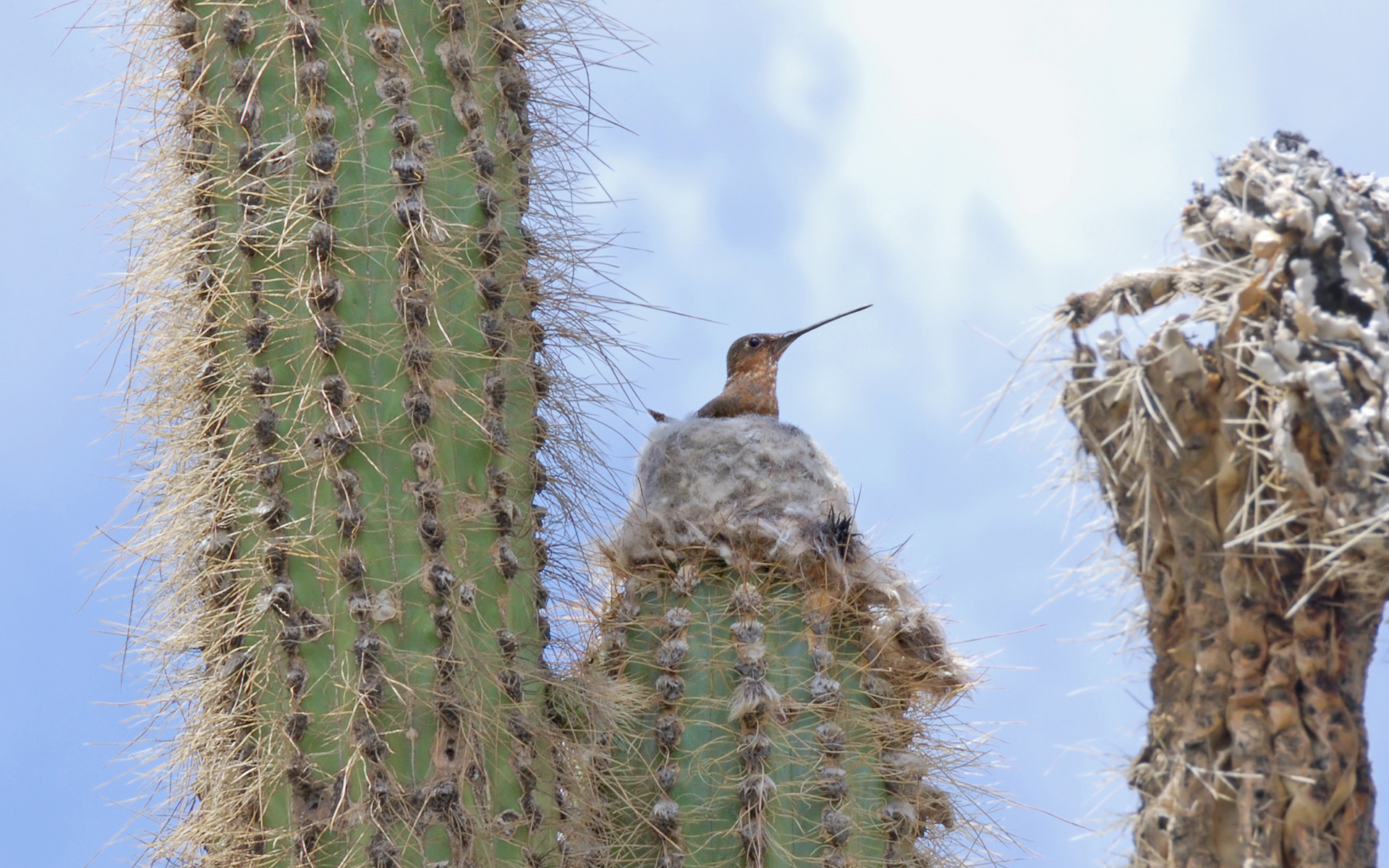
A giant hummingbird nesting in a Trichocereus werdermannianus cactus. Image credit: Mario Giorgetta.
Embracing our responsibility
In our biodiverse world, every species contributes to ecological balance. The giant hummingbird, with its grace and resilience, serves as a reminder of Nature's intricacies and interconnectivity. As custodians of the planet, we must support conservation efforts, ensuring the preservation of life's rich tapestry for future generations.
Explore Earth's Bioregions

